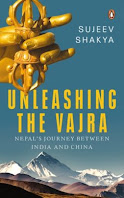Book Notes from New Ideas from Dead Economists: The Introduction to Modern Economic Thought
Some key notes from the book New Ideas from Dead Economists by Todd G. Buchholz, American economist. - Economics as the dismal science - Economists must be mathematicians, historians, philosophers and statesmen. - John Keynes -Attitude not latitude counts for a country - Attitude may be defined as the collective wisdom it gleans from great economists over the history - No one can be an informed voter or understand newspaper without knowledge of economics -In the Wealth of Nations Adam Smith warns society not to naively succumb to bourgeois blandishment - "Self-interest motivates more powerfully and consistently than kindness, altruism or martyrdom" - "Over time, markets drive producers to deliver better products and better prices". -"The forces that fight free international trade look formidable to the government". -" Countries that shun trade tend to stagnate or sink". - From 1776 to 1976 just five books reigned over economics: 1. Smith&





